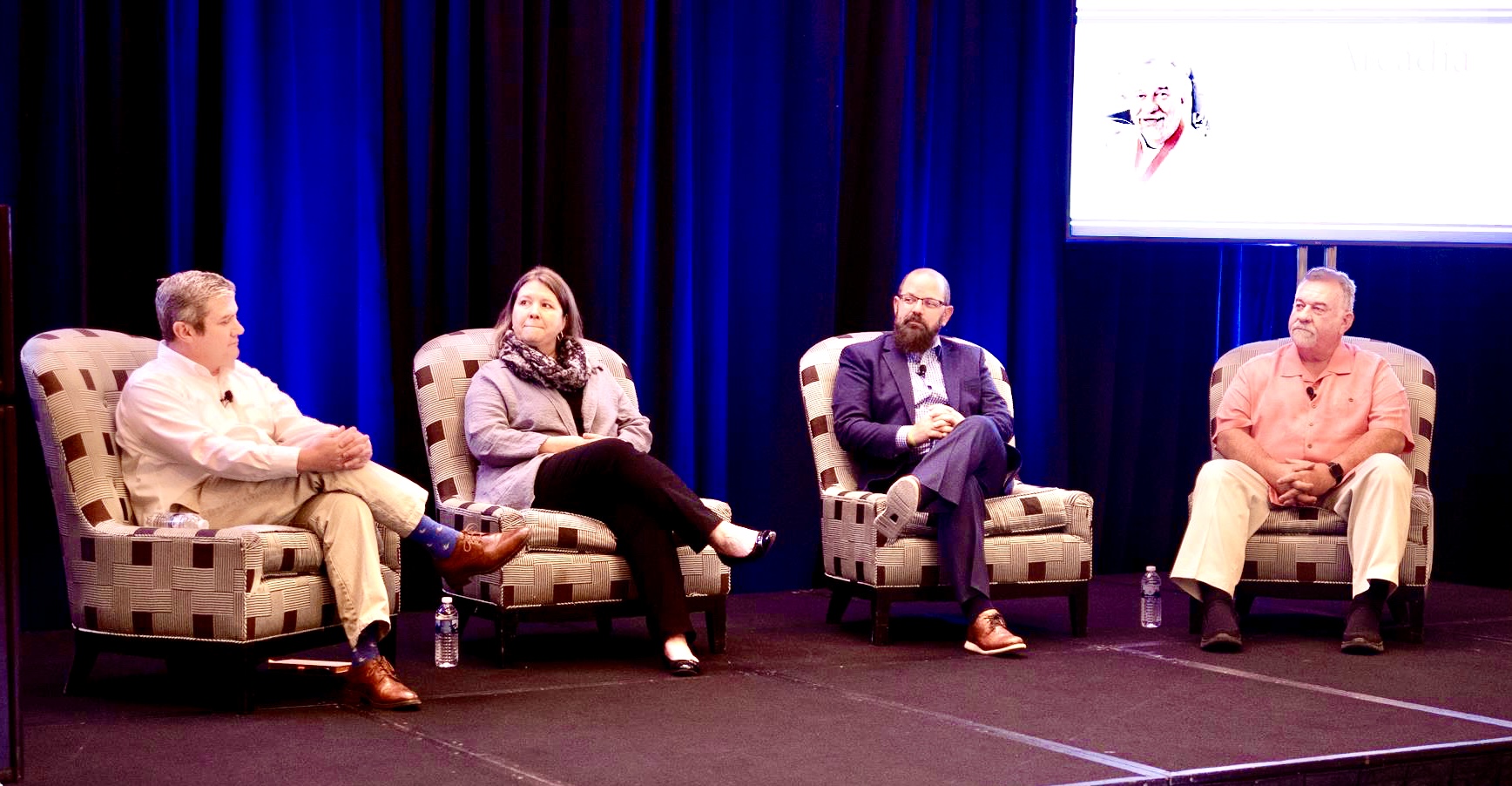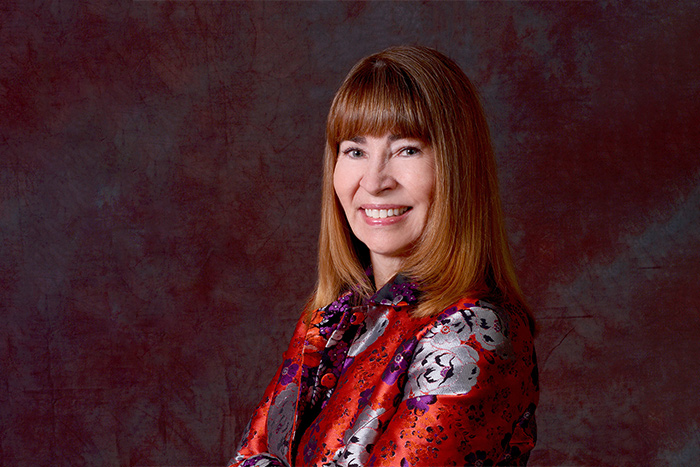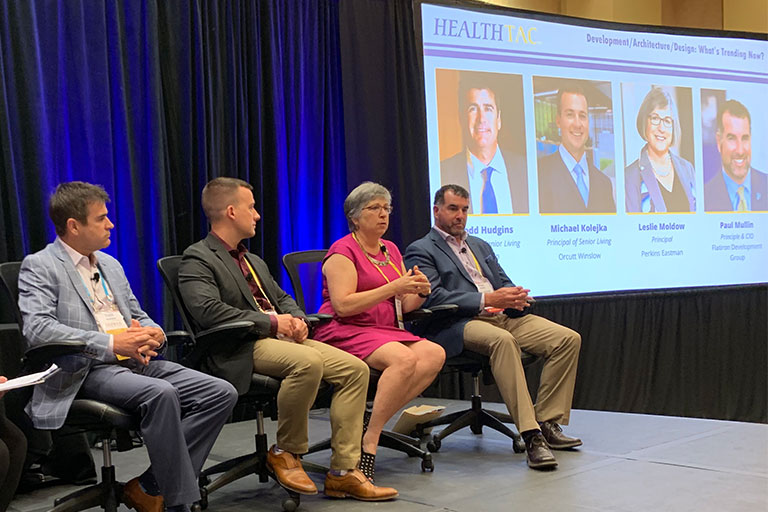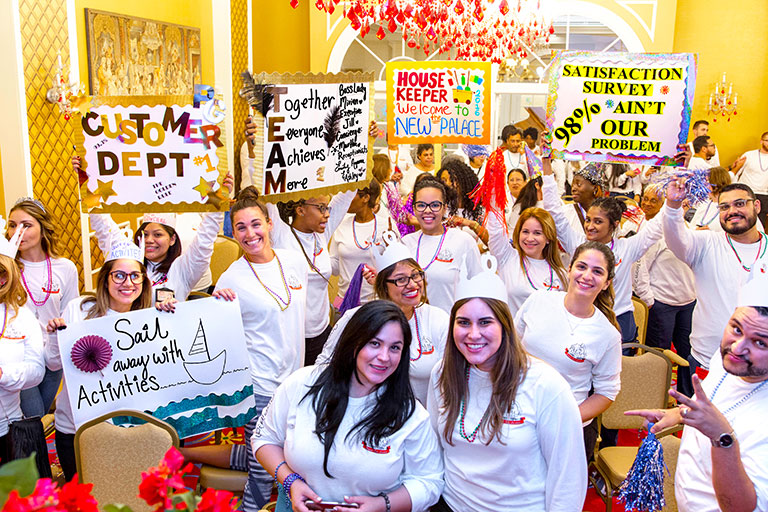
Staffing Solutions: The Glimmers that Keep Us Connected and Engaged
By Susan Perez-Yadron | January 9, 2024
Editor’s Note: This article was written and submitted by senior-living executive Susan Perez-Yadron. If you are a senior-living executive at a community with an idea for an article that you’d like to write and publish in Senior Living News you’re welcome to submit your written article or idea to our editor, Jim Nelson, at jnelson@seniorlivingnews.com. We welcome all ideas including, but not limited to, staffing recruitment and retention solutions, addressing the middle market, and successful, innovative programs or technology.
Senior living found me when I was a 6th-grade student at St. Stanislaus Catholic School. The church bulletin had a posting looking for volunteers through the Catholic Youth Organization and I felt the calling. My role was to pass out the candy prizes at Bingo at the Albertine Retirement Home. I remember the sweet smell of the Brach’s hard candy to this day, but what I remember more are the smiles of the residents when I passed out their winning prizes and how those smiles made me feel.
I have just introduced you to what I can now describe as a glimmer. As leaders in senior living, we have the opportunity to make a difference in our associates’ lives through connections and appreciation. We can set the stage for a work environment that radiates happiness and gratitude throughout their day with glimmer-filled moments such as accolades, prizes, and a safe comfortable workspace.
The traditional Webster dictionary definition of glimmer is a faint or wavering light. An example would be a candle glimmering in a window.
In her article Glimmers: How to Trigger feelings of Joy and Safety, Theodora Blanchfield, AMFT, reports that the concept of glimmers is part of the Polyvagal theory introduced in 1995 by behavioral scientist Stephen Porges. The theory describes how our autonomic nervous system is searching for and reading cues to determine whether they are dangerous. This process is called neuroception, and the vagus nerve is responsible for it.
The term glimmer, though, wasn’t introduced until 2018 in the book The Polyvagal Theory in Therapy: Engaging the Rhythm of Regulation by Deb Dana.
In 1997, when I was in my last year of an intense, four-year nursing program, I applied to the only hospital I wanted to work for. It was the hospital down the street from my grandparents’ home. I remember visiting my grandmother after a long shift; she would have coffee waiting for me so we could sit and talk about my workday. This was a glimmer.
This hospital was where I wanted to start my career and it would truly become my second home. I began working weekends as a CNA in a newly opened department called Acute Rehab. Because many of my classmates were applying to the ER and ICU, I settled into what would be a lifelong career of geriatric nursing.
In the last year of nursing school, I learned all about medical surgical pathways and everything I needed to know to earn my degree and license; in Acute Rehab I learned how to care for older adults. I spent the next six years learning clinical skills as well as how to work on a team to achieve long-term, patient-centered goals to improve the quality of life for our patients. The impact was incredible. I will never forget the success stories of helping patients who were completely dependent on care walk out of the Rehab Center achieving their goals.
Becoming a caregiver wasn’t difficult. It was a calling in my life as often it is for many.
Remaining a caregiver is the challenge.
When I think back to what kept me connected to my caregiver role, it was just that: a connection.
The many mentors who became my confidants, my cheerleaders, and my friends were glimmers.
I will never forget the “surprise” graduation party my team threw for me when I graduated nursing school. This was a glimmer.
I will never forget the stash of chocolate our unit secretary had for us on tough days. It was a glimmer.
I will never forget the secrets of the essential must-haves from the supply closet to make life easier as a caregiver. I remember the water pitcher liners we grabbed for our Diet Cokes, the paper tape to label everything with our initials, and Tegaderm dressings, because you never knew when you would need one. All glimmers.
I will also never forget the bond of our weekend and holiday coworkers — the potlucks, the cookie exchanges, the shift-to-shift report time together, talking about our families and upcoming vacations. All glimmers.
It’s been 38 years since I read that ad in the church bulletin that ultimately paved my way into senior living. I continue to work with seniors and caregivers in a clinical regional role supporting independent, assisted-living, and memory-care communities. The work I do continues to be guided by what I can only describe as what I now know as glimmers.
So, how do we help our associates see the glimmers throughout their workday? How do we as leaders help our staff feel moments of happiness and gratitude?
We simply provide a working environment that inserts glimmers into a work culture and environment that connects the associates, residents, families, and team.
When we discover what is important to our team and what sparks moments of joy for them, we can then put together an inventory of connections and an environment that offers glimmers to our staff and residents.
In order to provide glimmers in the workplace, we must do the following:
- Perform a culture inventory of our communities
- Have a sensory-inviting entrance into our communities
- Provide a break room that complements a 15- or 30-minute reprieve at break time
- Do an employee survey and ask about their interests and likes
- Read the room — are your associates smiling and engaged?
- Evaluate your new-employee orientation and ongoing staff development training for opportunities to teach work culture and team building
- Observe staff and resident interactions. Coach in the moment. Be present in the community. Invest time with your staff and residents
- Evaluate and reevaluate as needed your attendance and staff turnover indicators and drill down to the root cause for low attendance and high turnover
These are the first steps in putting together a plan for connection and an environment that offers glimmers to our staff and residents. Your inventory of what makes your associates and residents happy will give you the gift of being able to provide moments that spark positive energy and promote a work environment and a home in which our associates and residents will thrive.
Here are some simple, easy, inexpensive glimmers that we can promote in our communities:
- Have music playing in a common area
- Have a bowl of candy or mints available on your desk
- Have the “good” pens available to take notes with
- Have coffee brewing or a favorite beverage on hand
- Have hand lotion and other personal care items, such as individual ChapSticks or scented hand sanitizers, on hand
- Send personal “thank you” notes
- Perform acts of kindness that are important in the moment — transportation, a hot meal to go, ensuring shifts are covered for important events
- Pause to ask how family, friends and pets are doing
Finding out what gives our associates happiness will trickle down to our families, vendors, third parties, coworkers, and ultimately our residents. Once we know what sparks little moments of happiness at work, we will feel the connection that brings us all together to work our mission and purpose of caregiving — in a work culture that we can continue to be proud of.
Human connection through moments of joy and purpose is what we are all trying to achieve no matter what path we are on. Providing meaningful work in an environment that oozes appreciation and reciprocated value should always be our goal as leaders in senior living. It can be as simple as leading with kindness and investing in each individual team member.
This article has been lightly edited.





